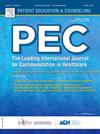Perspectives of family physician educators on shared decision making in preventive health care: A Qualitative Descriptive Inquiry
IF 2.9
2区 医学
Q2 PUBLIC, ENVIRONMENTAL & OCCUPATIONAL HEALTH
引用次数: 0
Abstract
Objective
To explore the views of family physician (FP) educators on shared decision making (SDM).
Methods
Qualitative descriptive study. Individual interviews were recorded with FPs in active practice who were also educators of Family Medicine residents. Data were analyzed following the phases of practical thematic analysis.
Results
15 practicing FP educators in a clinic setting were interviewed; nine female and six male FPs with practice experience averaging 19 years. We identified five themes, which we then grouped in two major categories: (i) Conceptual ideas about SDM and (ii) Challenges in putting SDM into practice. In the conceptual idea category: (1) Participants held different understandings of SDM and did not have consensus about when SDM should be achieved in clinical practice (difficulty conceptualizing what SDM is, understanding of SDM changes over time, SDM requires clinical equipoise). (2) Participants identified why SDM is important (patient-centred care). Themes in the putting SDM into practice category (ii) were: (3) When to engage in SDM is influenced by multiple factors (system factors, research-based evidence) as well as (4) patient factors (social or contextual factors, discordance or misalignment between doctor and patient on a specific decision, patient safety). (5) Resources and strategies are needed to put SDM into action.
Conclusion
An inconsistent understanding of SDM among FP educators, as well as several other challenges, helps explain why SDM has been difficult to implement in practice.
Practice implications
Physician educators will appreciate how this study unveils challenges to enhancing resident training for the use of SDM in primary care.
家庭医生教育者对预防保健共同决策的看法:定性描述调查。
本文章由计算机程序翻译,如有差异,请以英文原文为准。
求助全文
约1分钟内获得全文
求助全文
来源期刊

Patient Education and Counseling
医学-公共卫生、环境卫生与职业卫生
CiteScore
5.60
自引率
11.40%
发文量
384
审稿时长
46 days
期刊介绍:
Patient Education and Counseling is an interdisciplinary, international journal for patient education and health promotion researchers, managers and clinicians. The journal seeks to explore and elucidate the educational, counseling and communication models in health care. Its aim is to provide a forum for fundamental as well as applied research, and to promote the study of organizational issues involved with the delivery of patient education, counseling, health promotion services and training models in improving communication between providers and patients.
 求助内容:
求助内容: 应助结果提醒方式:
应助结果提醒方式:


